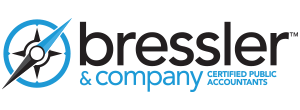If You Don’t Have Health Insurance you May Need an Exemption
The Affordable Care Act calls for each and every one of us to have qualifying health insurance coverage for each month of the year, have an health insurance exemption, or make a shared responsibility payment ( a fee) when filing your federal income tax return.You also have to pay for all of your health care. This fee is sometimes called the “penalty,” “fine,” “individual responsibility payment,” or “individual mandate” and goes up each year that you don’t have coverage.
The penalty in 2014 and beyond:
The penalty in 2014 is calculated one of 2 ways. If you or your dependents don’t have insurance that qualifies as minimum essential coverage you’ll pay whichever of these amounts is higher:
- 1% of your yearly household income. (Only the amount of income above the tax filing threshold, $10,150 for an individual, is used to calculate the penalty.) The maximum penalty is the national average premium for a bronze plan.
- $95 per person for the year ($47.50 per child under 18). The maximum penalty per family using this method is $285.
The way the penalty is calculated, a single adult with household income below $19,650 would pay the $95 flat rate. A single adult with household income above $19,650 would pay an amount based on the 1% rate. (If income is below $10,150, no penalty is due.)
The penalty increases every year. In 2015 it’s 2% of income or $325 per person. In 2016 and later years it’s 2.5% of income or $695 per person. After that it’s adjusted for inflation.
If you’re uninsured for just part of the year, 1/12 of the yearly penalty applies to each month you’re uninsured. If you’re uninsured for less than 3 months, you don’t have to make a payment.
So, who qualifies and how do you apply for an exemption?
If you don’t have coverage, you may qualify for a health insurance exemption, and may not have to make a shared responsibility payment when you file your next federal income tax return.
You may be exempt if you:
- Have no affordable coverage options because the minimum amount you must pay for the annual premiums is more than eight percent of your household income,
- Have a gap in coverage for less than three consecutive months, or
- Qualify for an exemption for one of several other reasons, including having a hardship that prevents you from obtaining coverage or belonging to a group explicitly exempt from the requirement.
Here is a list of hardship approved exemptions from Healthcare.gov:
If you have any of the circumstances below that affect your ability to purchase health insurance coverage, you may qualify for a “hardship” exemption:
You were homeless.
You were evicted in the past 6 months or were facing eviction or foreclosure.
You received a shut-off notice from a utility company.
You recently experienced domestic violence.
You recently experienced the death of a close family member.
You experienced a fire, flood, or other natural or human-caused disaster that caused substantial damage to your property.
You filed for bankruptcy in the last 6 months.
You had medical expenses you couldn’t pay in the last 24 months.
You experienced unexpected increases in necessary expenses due to caring for an ill, disabled, or aging family member.
You expect to claim a child as a tax dependent who’s been denied coverage in Medicaid and CHIP, and another person is required by court order to give medical support to the child. In this case, you do not have the pay the penalty for the child.
As a result of an eligibility appeals decision, you’re eligible for enrollment in a qualified health plan (QHP) through the Marketplace, lower costs on your monthly premiums, or cost-sharing reductions for a time period when you weren’t enrolled in a QHP through the Marketplace.
You were determined ineligible for Medicaid because your state didn’t expand eligibility for Medicaid under the Affordable Care Act.
Your individual insurance plan was cancelled and you believe other Marketplace plans are unaffordable.
You experienced another hardship in obtaining health insurance.
Where do you apply for an exemption?
Where you have to apply for an exemption depends upon the type of exemption you qualify for. You can obtain some exemptions only from the Marketplace in the area where you live, others only from the IRS when you file, and yet others from either the Marketplace or the IRS.
Additional information about exemptions is available on the Individual Shared Responsibility Provision web page on IRS.gov. This page includes a link to a chart that shows the types of exemptions available and whether they must be granted by the Marketplace, claimed on an income tax return filed with the IRS, or by either the Marketplace or the IRS.
If you apply must apply for an exemption from the Marketplace, you shouldn’t wait until you file your taxes to do that. Right now it look as though, for several situations, you can request an exemption when you file, but knowing how things keep changing with the Obamacare regulations, I recommend that you apply early because you have a fill out specific forms for each type of exemption, and you may need that information before you can file. For example, you may need an Exemption Certificate Number (see below).
How to apply now for an exemption:
If you’re applying for an exemption based on: coverage being unaffordable; membership in a health care sharing ministry; membership in a federally-recognized tribe; or being incarcerated you will have to apply to either the federal or state Marketplace if your state has one, and California does have it’s own Marketplace.
According to the Form OMB No. 0938-1190 used to apply if you cannot afford coverage and your state has it’s own Marketplace, you will need to apply before you file your taxes because you will need to include an Exemption Certificate Number on your tax return form. I’m going through this form right now to see what they require, and not only do you have to fill out and submit this package of forms, but you will have to submit an application for insurance through the Marketplace and send two things with the this application packet: 1) A copy of the eligibility notice from your state’s Marketplace that shows your maximum premium tax credit; and 2) a copy of the computer screen from your Marketplace’s plan comparison tool that shows the premium of the lowest-cost bronze plan available to everyone in your household who is requesting this exemption. Additionally, if you are offered health insurance through your work or your spouses work and can’t afford that either, you will have to include Appendix A: Exemptions for Heath Coverage from Jobs. That form requests information on whether or not your employer’s current plan meets Obamacare standards, whether or not your are eligible for coverage, and if so on both questions, they want to know how much that coverage would cost you.
According to IRS.gov, if you are apply for an exemption, you have 2 options:
- You can claim your exemptions when you fill out your 2014 federal tax return, which is due in April 2015.*
- You can apply for the exemptions using the applicable form below. See instructions to help you fill out an exemption application.
- Form to apply for exemption based on coverage being unaffordable (if you live in a state using Healthcare.gov) (other than California)
- Form to apply for exemption based on coverage being unaffordable (if you live in a state using its own health exchange); i.e.; California.
- Form to apply for exemption based on membership in a health care sharing ministry.
- Form to apply for exemption for American Indians and Alaska Natives and others who are eligible for services from an Indian health care provider.
- Form to apply for exemption based on being incarcerated.
Note: If you get an exemption because coverage is unaffordable based on your expected income, you may also qualify to buy catastrophic coverage through the Marketplace. This may be more affordable than your other options.
* Call the California State Marketplace at 1-800-300-1506 for clarification on any choice you would like to make. In one place they’re saying you have 2 options of where to apply for an exemption if you can’t afford insurance, but on the linked chart, it says you only need to do that on your tax return. For some exemptions you do need to apply early and get an Exemption Certificate No. that you put on your tax return. There may be further clarification coming, but I wouldn’t wait. I would call them directly and find out exactly what you need to do and how to do it.
I did call today, Monday, May 19, 2014, and asked for some clarification about where and how to request an exemption if I thought insurance was too expensive for me. I told the woman I spoke to about the contradictory information I read giving me two different answers on where and or how to apply, and was told that they probably wouldn’t even enforce the mandate this first year.
Again, for the latest information for your particular situation, I would recommend calling the California State Marketplace at 1-800-300-1506.





